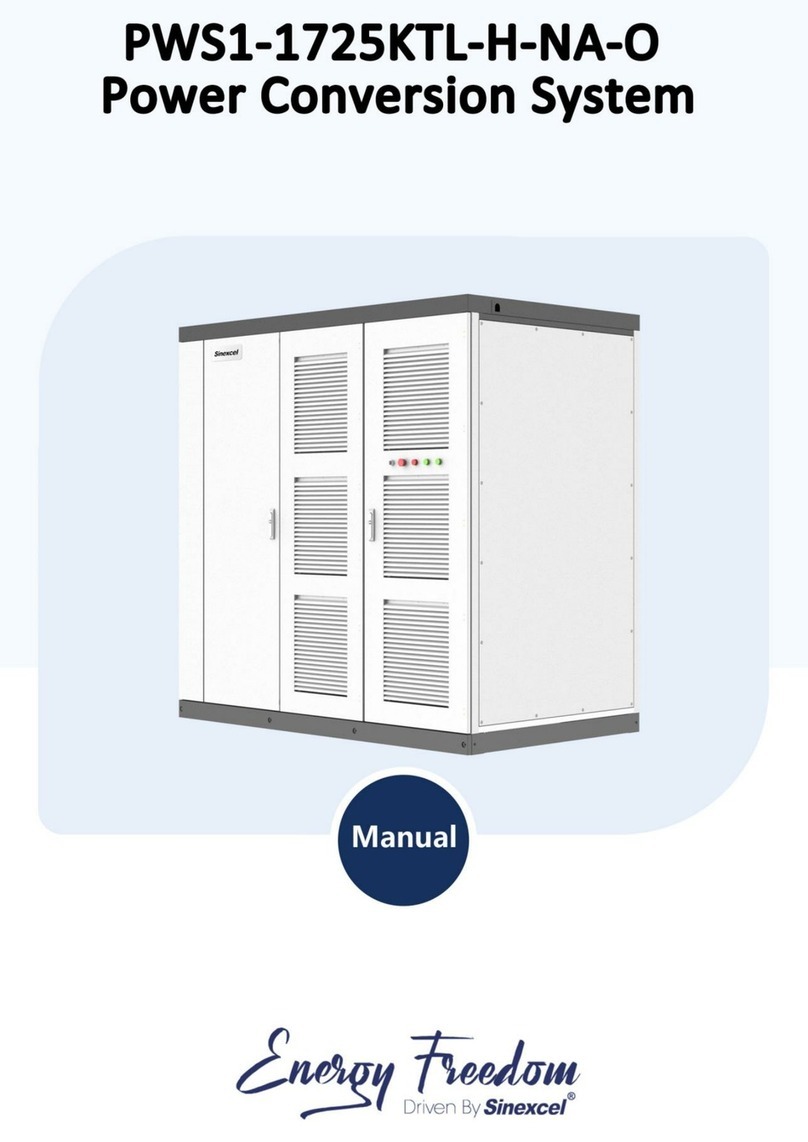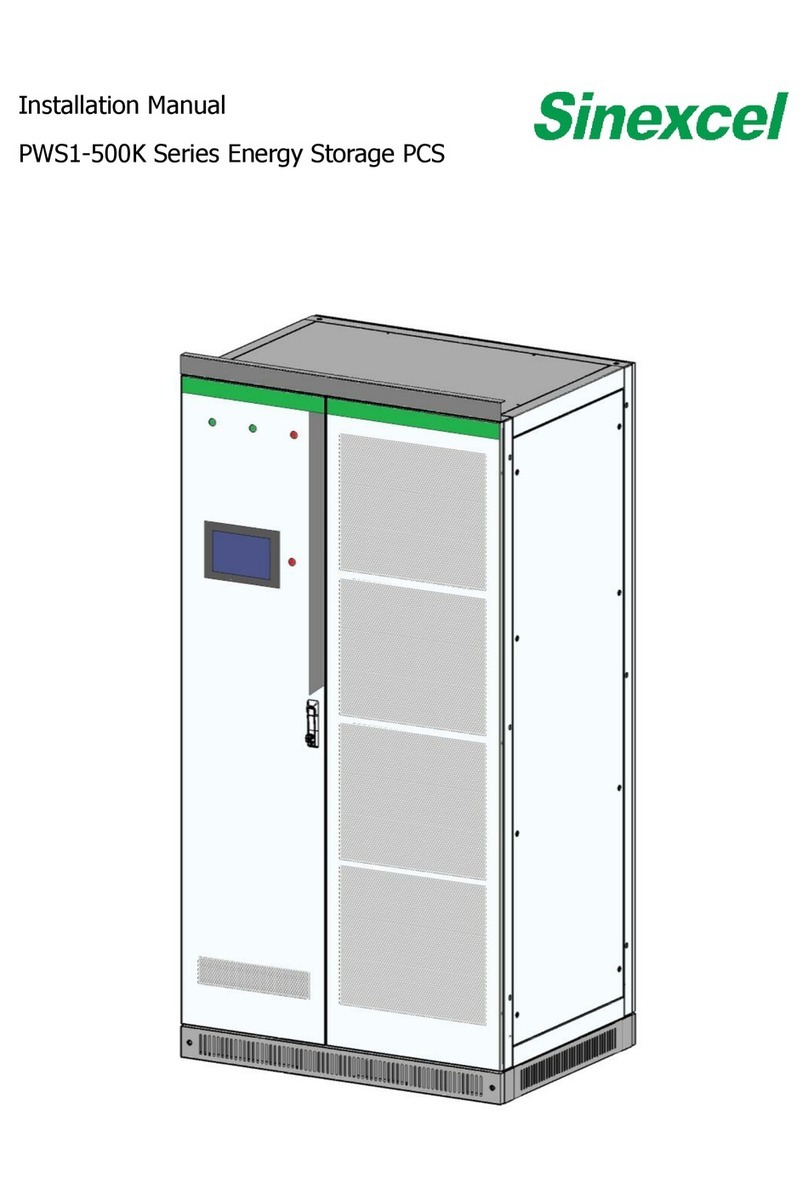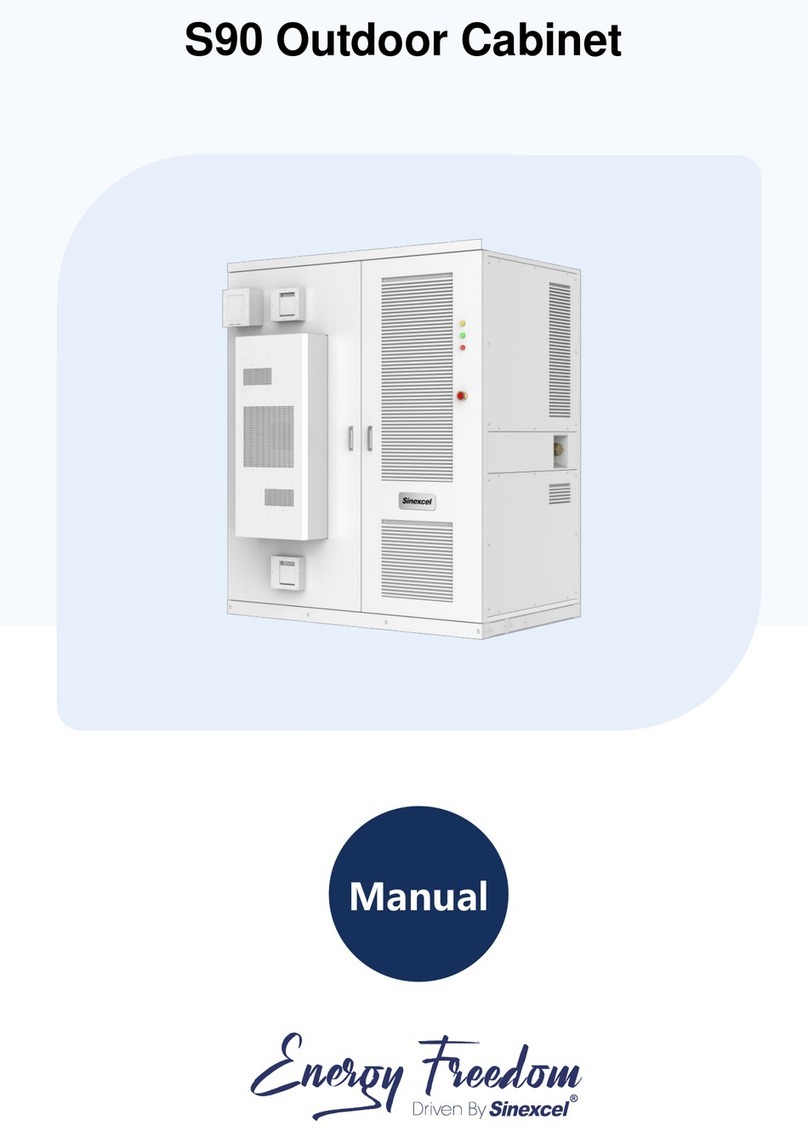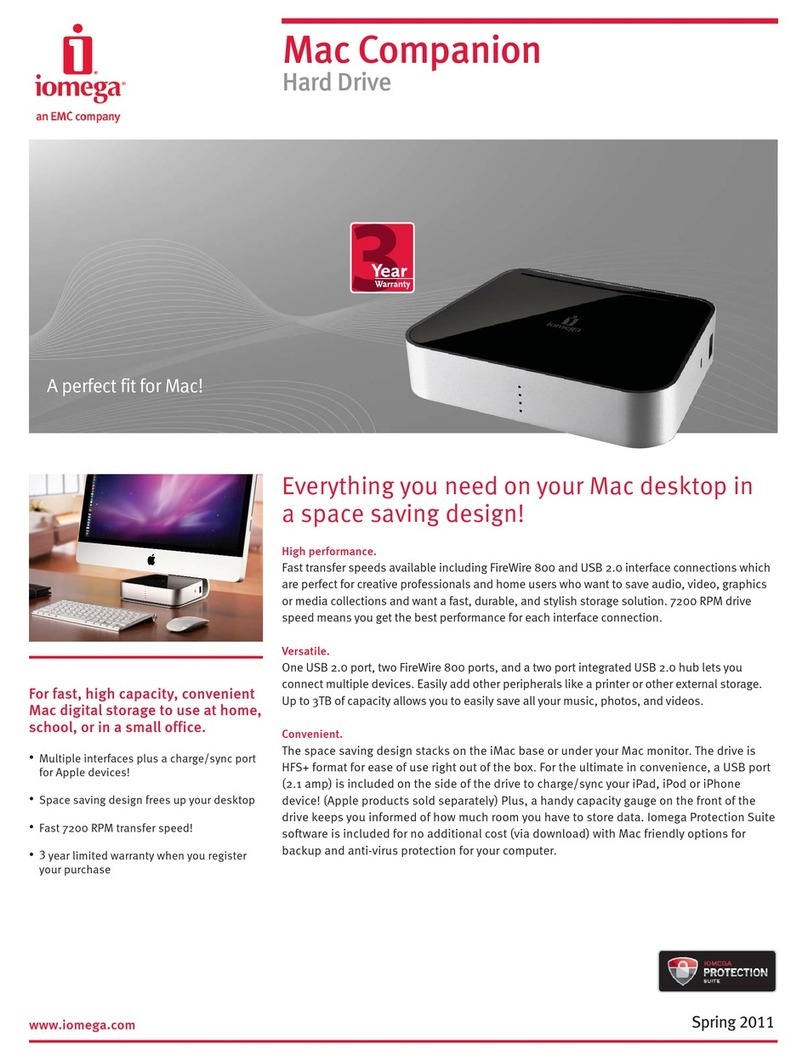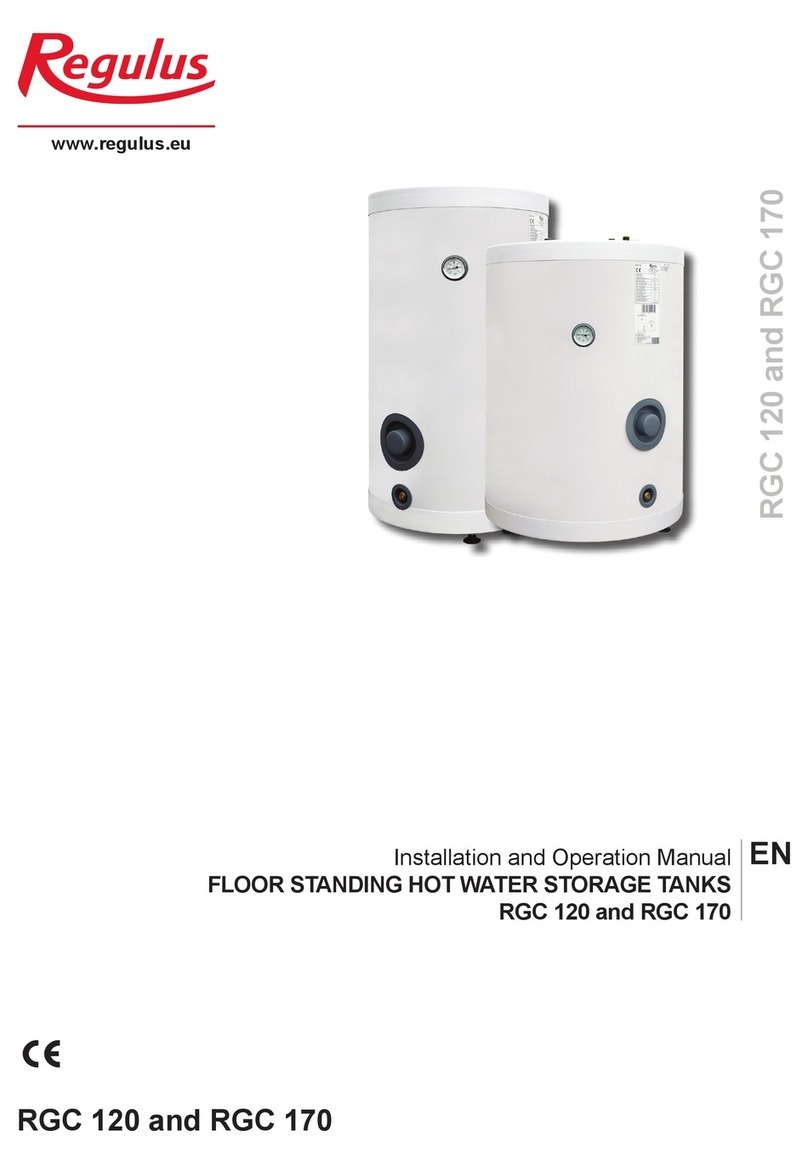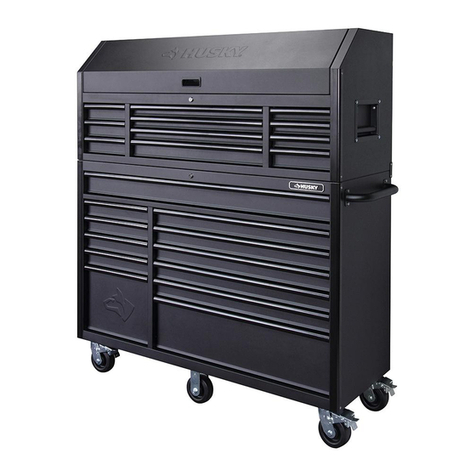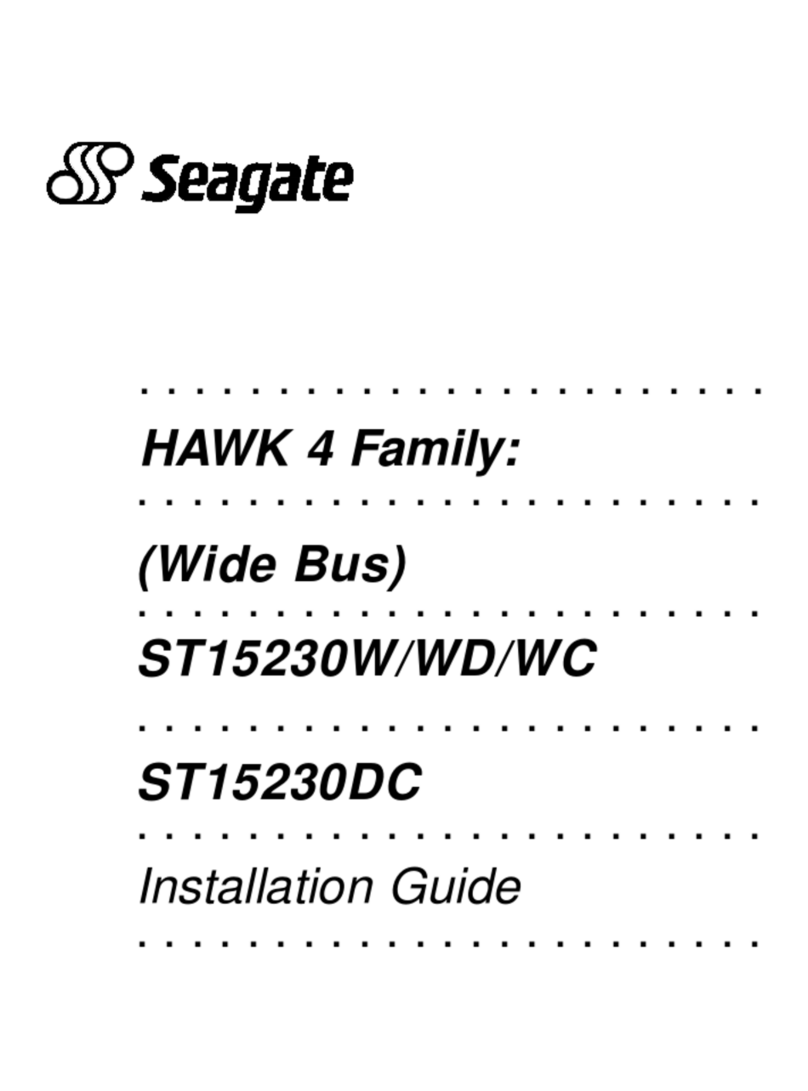Sinexcel PWS1-500KTL-EX-1M User manual

Installation Manual
PWS1-500K Series Energy Storage PCS

1

2
Sinexcel
PWS1-500KTL-EX-1M/2M/3M/4M/5M/6M/7M/8M
PWS1-500KTL-EX-M1/M2/M3/M4/M5/M6/M7/M8
Series Bi-directional Energy Storage PCS
Installation Manual
Version: V2.1
Shenzhen Sinexcel Electric Co., Ltd.
All rights reserved. In case of any content change, it shall be without prior notice.
Shenzhen Sinexcel Electric Co., Ltd.
Website: http://sinexcel.us/ or www.sinexcel.com
Add: Building 6, Area 2, Baiwangxin High-tech Industrial Park, No. 1002, Songbai Road, Nanshan District,
Shenzhen
Postcode: 518055
Hotline: +86 0755-8651-1588

3
Contents
1 INFORMATION ON THIS DOCUMENT ............................................................................................................................. 7
1.1 VALIDITY ............................................................................................................................................................................ 7
1.2 TARGET GROUP ................................................................................................................................................................... 7
2 SAFETY PRECAUTIONS.................................................................................................................................................... 9
2.1 IMPORTANT SAFETY INSTRUCTIONS .......................................................................................................................................... 9
2.2 ADDITIONAL INFORMATION .................................................................................................................................................. 12
3 INSTALLATION DESIGN ................................................................................................................................................. 13
3.1 INSTALLATION PROCESS ....................................................................................................................................................... 13
4 STORING, LIFTING AND TRANSPORTING ...................................................................................................................... 14
4.1 SCOPE OF DELIVERY ............................................................................................................................................................ 14
4.2 SAFETY DURING TRANSPORT ................................................................................................................................................ 14
4.2 TRANSPORTING THE PCS ..................................................................................................................................................... 15
4.2.1 Transport and storage ........................................................................................................................................... 15
4.2.2 Transporting .......................................................................................................................................................... 15
4.3 UNPACKING THE PCS .......................................................................................................................................................... 16
5 MECHANICAL INSTALLATION ........................................................................................................................................ 16
5.1 SAFETY DURING INSTALLATION .............................................................................................................................................. 16
5.2 INSTALLATION REQUIREMENTS .............................................................................................................................................. 18
5.2.1 Environment requirements .................................................................................................................................... 18
5.2.2 Ground requirements ............................................................................................................................................ 18
5.2.3 Ventilation ............................................................................................................................................................. 18
5.2.4 Operation space .................................................................................................................................................... 19
5.2.5 Other requirements ............................................................................................................................................... 21
5.3 MOUNTING PREPARATION ................................................................................................................................................... 21
5.4 RACK INSTALLATION ............................................................................................................................................................ 22
5.5 INSTALLATION IN CONTAINER ................................................................................................................................................ 25

4
5.5.1 Container internal layout distance ........................................................................................................................ 25
5.5.2 Fan installed inside the container .......................................................................................................................... 26
5.5.3 Fan installed outside the container........................................................................................................................ 27
5.5.4 Air duct design ....................................................................................................................................................... 29
5.5.5 Installation of Fan module ..................................................................................................................................... 30
6 ELECTRICAL INSTALLATION ........................................................................................................................................... 31
6.1 ELECTRICAL CONNECTIONS .................................................................................................................................................. 31
6.1.1 Input requirement.................................................................................................................................................. 31
6.1.2 Output requirement ............................................................................................................................................... 31
6.1.3 Wiring mode .......................................................................................................................................................... 31
6.1.4 System grounding .................................................................................................................................................. 40
6.1.5 DC port wiring ........................................................................................................................................................ 41
6.1.6 AC port wiring ........................................................................................................................................................ 42
6.1.7 Wiring of terminal strips ........................................................................................................................................ 43
6.2 COMMUNICATION INTERFACE ............................................................................................................................................... 46
6.2.1 Connecting the EMS over RS485 or Ethernet ......................................................................................................... 47
6.2.2 Connecting a BMS over CAN .................................................................................................................................. 48
6.3 RCDS .............................................................................................................................................................................. 49
6.4 CHECK AFTER INSTALLATION ................................................................................................................................................. 49
6.5 INSTALLATION CHECKLIST ..................................................................................................................................................... 50
6.6 BATTERIES ........................................................................................................................................................................ 51
7 FUNCTIONAL DESCRIPTION .......................................................................................................................................... 52
7.1 OPERATING STATUS ............................................................................................................................................................ 52
7.1.1 Overview of the Operating Status ......................................................................................................................... 52
7.1.2 Operating States without STS ................................................................................................................................ 54
8 OPERATION .................................................................................................................................................................. 55
8.1 SAFETY DURING OPERATION ................................................................................................................................................. 55
8.2 POWER ON PROCEDURE ..................................................................................................................................................... 55
8.3 SETTING PROCEDURE BEFORE STARTUP ................................................................................................................................... 56

5
8.3.1 Touch screen power on .......................................................................................................................................... 56
8.3.2 Log into the control Interface ................................................................................................................................ 57
8.3.3 Select Control Mode .............................................................................................................................................. 57
8.3.4 General Settings .................................................................................................................................................... 58
8.3.5 Communication setting ......................................................................................................................................... 58
8.4 MANUAL STARTUP PROCEDURE ............................................................................................................................................ 59
8.5 AUTOMATIC STARTUP PROCEDURE ........................................................................................................................................ 59
8.6 REMOTE STARTUP PROCEDURE ............................................................................................................................................. 59
8.7 SHUTDOWN PROCEDURE ..................................................................................................................................................... 59
8.8 SYSTEM POWER OFF .......................................................................................................................................................... 60
8.9 EMERGENCY SHUTDOWN ..................................................................................................................................................... 60
9 TROUBLESHOOTING ..................................................................................................................................................... 61
9.1 SAFETY DURING TROUBLESHOOTING ...................................................................................................................................... 61
9.2 EXPORT FAULT RECORD ........................................................................................................................................................ 61
9.3 FAULTS CAUSED BY IMPROPER PARAMETER SETTINGS ................................................................................................................. 61
9.4 EARTH FAULT DETECTION .................................................................................................................................................... 63
9.5 DETAILED TROUBLESHOOTING .............................................................................................................................................. 63
10 MAINTENANCE .......................................................................................................................................................... 64
10.1 SAFETY DURING MAINTENANCE .......................................................................................................................................... 64
10.2 MAINTENANCE SCHEDULE AND CONSUMABLES ..................................................................................................................... 65
10.2.1 Operation environment requirements ................................................................................................................. 65
10.2.2 Electrical and fixed connection inspection ........................................................................................................... 65
10.2.3 Clearing and cleaning .......................................................................................................................................... 66
10.3 MAINTENANCE WORK ...................................................................................................................................................... 66
11 COMMON SETTINGS .................................................................................................................................................. 68
11.1 Language Selection ................................................................................................................................................. 68
11.2 Date and Time Selecting ......................................................................................................................................... 68
11.3 Communication setting .......................................................................................................................................... 68
11.4 AC settings .............................................................................................................................................................. 69

6
11.5 DC settings .............................................................................................................................................................. 70
11.6 SYSTEM SETTING ............................................................................................................................................................. 72
11.6.1 General Setting .................................................................................................................................................... 72
11.6.2 Power Quality Mode Settings .............................................................................................................................. 73
11.6.3 Country Code Settings ......................................................................................................................................... 73
11.6.4 DRM Settings and DRED ...................................................................................................................................... 73
12 WEB MONITORING PORTAL ......................................................................................................................................... 73
13 CONTACT .................................................................................................................................................................... 74

7
1 Information on this Document
1.1 Validity
This document is valid for the following device models with or without STS module:
• PWS1-500K
• PWS1-500KTL
• PWS1-500KTL-EX-1M/2M/3M/4M/5M/6M/7M/8M
• PWS1-500KTL-EX-M1/M2/M3/M4/M5/M6/M7/M8
Model definition
This section introduces product model definition in this user's manual, as shown in Fig. 1-1:
PWS
1
-
500
KTL
-
EX
-
XM
Rated Power
:
500K
500KTL: 500K Transformerless
500K: 500K with transformer
Bi-directional Energy Storage PCS
EX: For Europ and other country
XM: Module number
MX
:
DC input number
Fig.1-1 Product model definition
For example:
PWS1-500KTL: 500kW Bi-directional storage inverter without isolation transformer.
PWS1-500K: 500kW Bi-directional storage inverter with isolation transformer.
Check the type label for the production version of PCS.
The illustrations in this document have been reduced to be necessary and may differ from the real product.
1.2 Target Group
The tasks described in this document can only be performed by professionals or other qualified persons.
Qualified persons must have the following skills:
• Understand how the product works and how to operate the product
• Understand how the battery works and how to operate the battery
• Training on how to deal with the hazards and risks associated with installing and using electrical
equipment installation

8
• Installation and commissioning of electrical equipment and installations
• Understand all applicable standards and directives
• Understand and follow this manual and all safety information

9
2 Safety Precautions
2.1 Important Safety instructions
This user’s manual is about installation and operation of Sinexcel PWS1-500K series Bi-directional Storage
Inverter (PCS).
Before installation, please read this user’s manual carefully.
The PCS must be commissioned and maintained by the engineers designated by the manufacturer or the
authorized service partner. Otherwise, it might endanger personal safety and result in device fault. Any
damage against the device caused thereby shall not be within the warranty scope.
The PCS cannot be used for any circumstance or application related to life support device.
This manual contains important instruction for Models of PWS1 series that shall be followed during
installation and maintenance of the PCS.
NO.
Symbol Reference Standard Description
1
IEC 60417-5036
IEC 60417-5416
Note the shock hazard,
energy storage time
release (discharge time
is marked next to the
symbol)
2
ISO 7000-0434 Watch out for danger

10
3
IEC 60417-5041 Watch out for hot
surface
4
ISO 7000-1641
Refer to the operation
manual
Any contact with copper bar, contactor and terminal inside the device or connected with the loop of utility
grid might result in burning or fatal electric shock.
Don’t touch any terminal and conductor connected with the loop of utility grid.
Pay attention to any instruction and safety documents about power on-grid.
There might be an electric shock risk inside the device!
Any operation related to this device will be conducted by professionals.
Pay attention to the safety precautions listed in safety instruction and installation documents.
Pay attention to the safety precautions listed in operating and installation manual and other documents.

11
Large leakage current
Before connecting input power supply, please ensure that the grounding is reliable.
The device must be grounded complying with the local electric codes.
When storage battery is connected to PCS, there may be DC voltage at input port. Please pay attention to it
during operation or check the battery system user manual
Don’t touch electric parts within 15 minutes after switchin off!
There is dangerous energy in capacitance storage. Don’t touch device terminal, contactor and cooper bar
and other electric parts within 15 minutes after disconnecting all device power supplies.
All maintenance and preservation inside the device require using tools and shall be conducted by trained
person. The components behind the protective cover plate and dam board which are opened by tools cannot
be maintained by users.
Please read this user’s manual before operation.

12
2.2 Additional Information
Links to additional information can be found at http://sinexcel.us/ or www.sinexcel.com.

13
3 Installation design
3.1 Installation process
Start
Preparations
Lifting and transporting
End
Mechanical Installation
Electrical Installation
Installation Check
Commissioning
startup and operate
Fig. 3-1 Installation Process
Installation process description
Process Explanation Chapter
Preparation
Lifting and transporting
4 Storing, lifting and transporting
Mechanical Installation 5 Mechanical Installation
Electrical Installation 6 Electrical Installation
Installation Check 7 Installation checklist
Commissioning startup and operate 8 Start-up and Operation

14
4 Storing, lifting and transporting
4.1 Scope of Delivery
Refer table below for packing list of rack of storage inverter:
Table 4-1 Scope of Delivery
Item Quantity Remark
User’s manual 1 copy Electronic Document
Overall dimension and foundation installation diagram
1 copy Electronic Document Schematic diagram
External terminal diagram
Certificate of quality 1 copy
The electronic document can be downloaded from Sinexcel’s website or provided by Sinexcel’s staff.
4.2 Safety during Transport
If the lifted or suspended load falls over, falls or sways, there is a risk of crushing
Vibration or careless or hasty lifting and transport can cause the product to tip over or fall. This can result in
death or serious injury.
All national transport standards and regulations must be respected.
Always transport the product as close as possible to the floor.
Avoid fast or uneven movement during transport.
Always maintain a sufficient safety distance from the product during transportation.

15
Damaged frame structure of the PCS due to uneven support surface
Placing the PCS on an uneven surface can cause bending, which causes the PCS door to no longer close
properly.
This can cause moisture and dust to seep into the PCS.
Do not place the PCS on an unstable, uneven surface, even for short periods of time.
The unevenness of the support surface must be less than 0.25%.
Do not use the installed kick plate to transport the PCS.
4.2 Transporting the PCS
4.2.1 Transport and storage
The module of the PCS are installed in the PCS cabinet rack during shipping. During device transport and
storage, pay attention to the caution sign on the packing case.
The selection of storing position should ensure that:
• There is no corrosive gas around it.
• There are over-wetting and high-temperature sources.
• It is not a dusty environment.
• It complies with the local firefighting requirements.
During rack transport and storage, stacking is not allowed. The device top cannot be placed with other
articles.
The rack should be placed vertically at forward direction. Keep it upright and don’t place it horizontally.
4.2.2 Transporting
When removing the PCS unpacked from packing case, a forklift can be used to remove the whole PCS
cabinet rack.
Users can lift the device from the bottom with a forklift. There is no lifting hole on its top.

16
Fig. 4-1 Moving PCS
Before the rack is moved, please ensure that the module is fixed stably.
4.3 Unpacking the PCS
Please take care to protect the PCS inside the package when unpacking.
PCS can’t be inverted and the vertical tilt angle should not exceed 30 degree.
5 Mechanical Installation
5.1 Safety during Installation
Risk of electric shock caused by live voltage:
There is a high voltage in the live components of the product. Touching field components can result in death
or seriousness electric shock damage.
Wear appropriate personal protective equipment for all work on the product.

17
Do not touch any live components.
Observe all warning messages in products and documents.
Obey all safety information from the battery manufacturer.
Electric shock hazard caused by DC cable:
The DC cable connected to the battery is live. Contact with live cables can cause electrocution, death or
serious injury and shock.
Before connecting the DC cable, make sure that the DC cable has no voltage.
Wear appropriate personal protective equipment for all work on the product.
Danger to life due to electric shock when entering the storage system:
Damage to the insulation in the storage system can result in fatal ground currents. May cause a fatal electric
shock. Ensure that the insulation resistance of the storage system exceeds the minimum.
Minimum value:The insulation resistance is: 14kΩ.
The PCS must be installed in a closed electrical operating area not accessible to public.
Fire due to failure to observe torque specifications at real-time bolt connections
Failure to comply with the specified torque reduces the current carrying capacity of the live bolt connection,
thereby increasing the contact resistance.
This can cause the components to overheat and catch fire.

18
Be sure to always tighten the live bolt connection using the correct torque specified in this document.
Use only the right tools when working on the device.
Avoid repeatedly tightening the live bolt connection as this may result in unacceptably high torque.
5.2 Installation requirements
5.2.1 Environment requirements
It is installed indoor. Direct sunshine, rain and ponding should be avoided.
The installation environment is clean. The air should not contain lots of dust.
The installation position should on firm base.
Environment temperature should be within the temperature range listed in technical specification.
The installation position is convenient for observing the touch screen.
5.2.2 Ground requirements
The storage inverter needs to be installed on flat ground. The weight-bearing capacity of the ground for
installation should be greater than 1,000kg/ m2.
5.2.3 Ventilation
The storage inverter has forced air-cooling. Every module has an independent ventilation route. The module
heat dissipation mode is air inlet in the front and air outlet in the rear. The cold air is inhaled from the mesh
openings of front door of the rack. After heat absorption, the hot air is discharged from the mesh openings
of rear door of the rack.
To ensure the quality of air inlet, please carry out installation according to the operation space requirement
in section below. Proper space should be reserved for air inlet and outlet. A exhaust is recommend to be
installed in the room so as to ensure that the heat emitted from the storage inverter can be discharged
outside the room.

19
At the rear of the rack, heat dissipation should be guaranteed and ventilation equipment needs to be
installed so as to ensure that the heat emitted from the storage inverter can be discharged outside the
machine room.
5.2.4 Operation space
The installation space of the PCS should have a proper distance from its peripheral walls so as to ensure that
the machine door can be opened and closed conveniently and there will be sufficient space for module
insertion and extraction, normal heat dissipation and user’s operation.
Fig. 5-1Front and back installation space of storage inverter(Please seen Chapter 5.5 Installation in
container for the recommend fan location)
Position Description
A front ≥800mm, ensure that the front door of the rack can be fully opened. There is
sufficient space for cold air to enter. Users can conveniently insert and extract the
module and operate the breaker.
B rear ≥800mm, ensure that the rear door of the rack can be fully opened. Please seen
Chapter 5.5 for the air volume requirements and air duct design. Ventilation and
heat dissipation should be ensured. Users can have sufficient space for
maintenance.
This manual suits for next models
18
Table of contents
Other Sinexcel Storage manuals
Popular Storage manuals by other brands
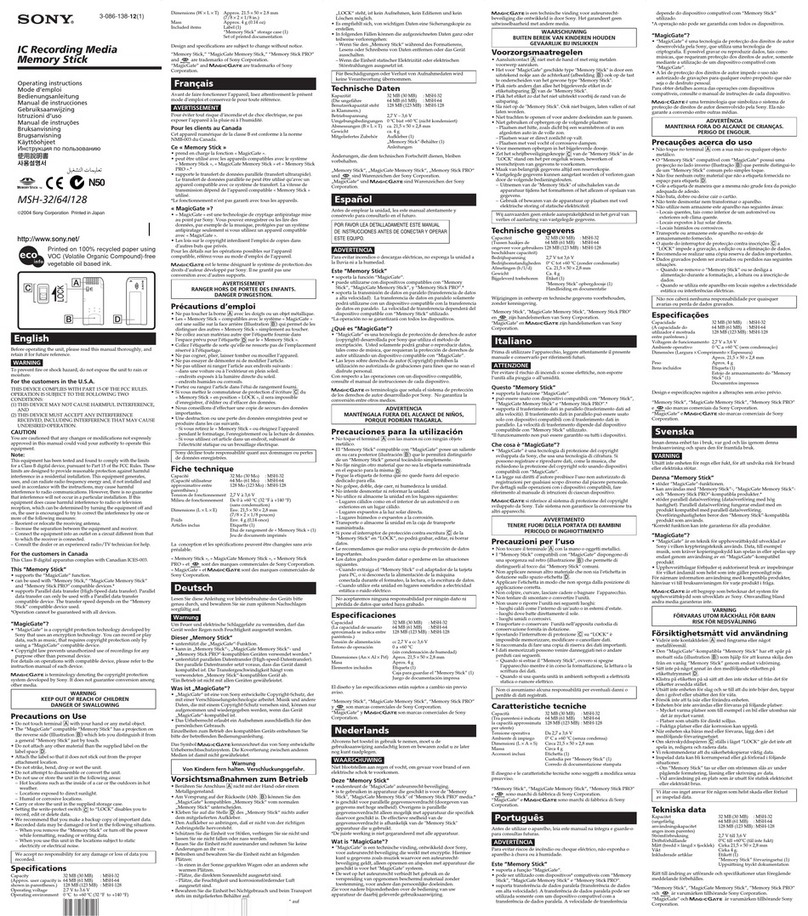
Sony
Sony MSH-128 operating instructions
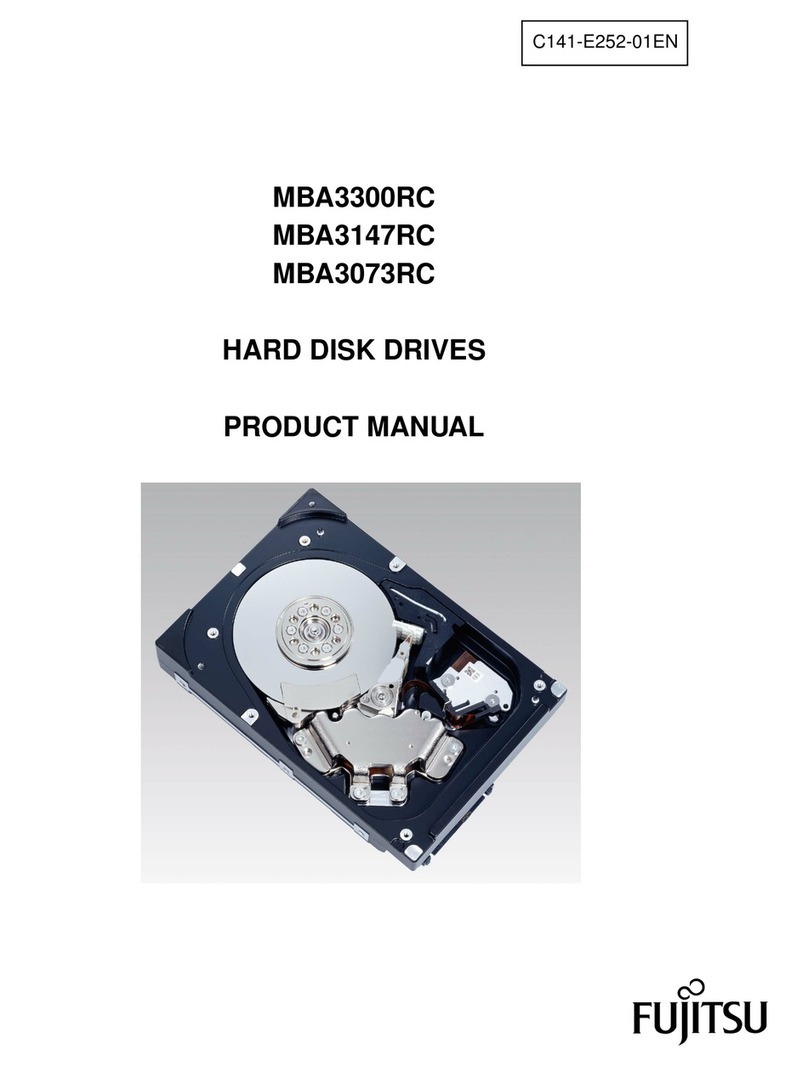
Fujitsu
Fujitsu MBA3147RC - Enterprise 147 GB Hard Drive product manual
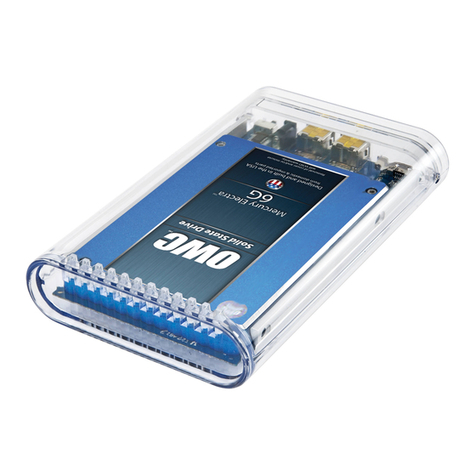
OWC
OWC Mercury On-The-Go Pro user guide
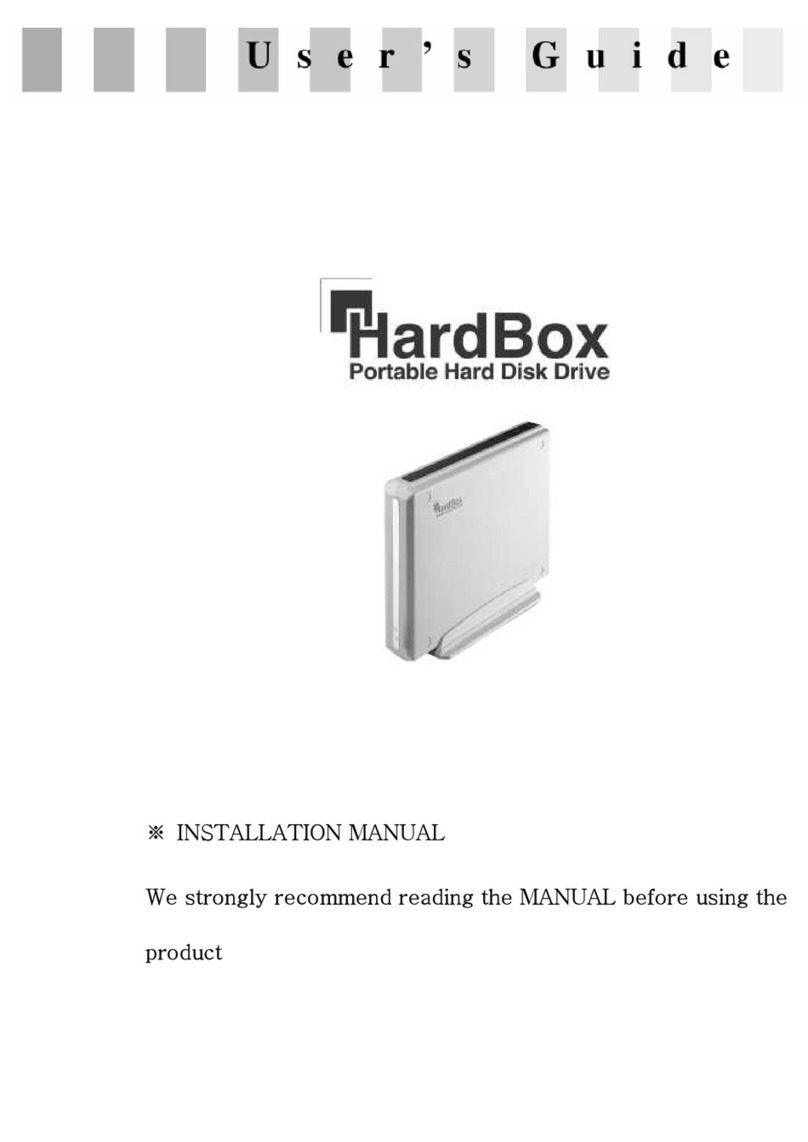
HardBox
HardBox FHD-354 installation manual

Transcend
Transcend MMC Series Quick instruction guide
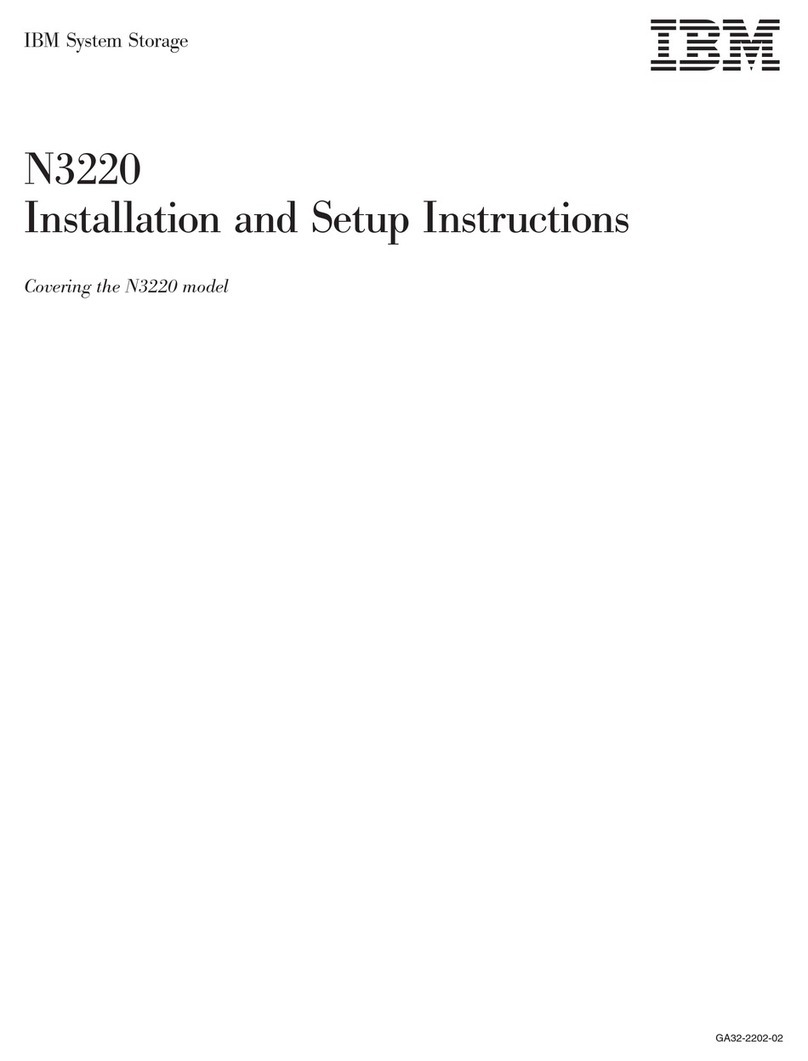
IBM
IBM System Storage N3220 Installation and setup instructions
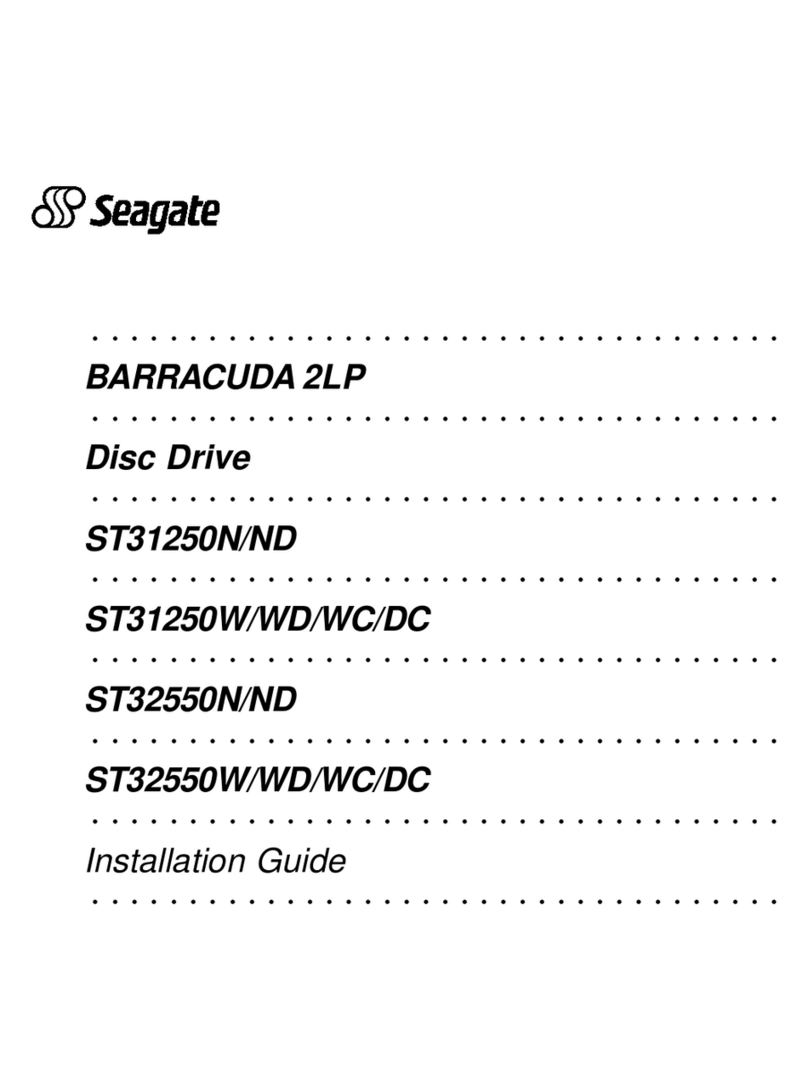
Seagate
Seagate BARRACUDA 2LP ST31250N/ND installation guide

Western Digital
Western Digital WDXMS1600 - Passport Portable 160 GB External Hard... Product specifications

Norcent
Norcent SDT-1GB UPC # TBD Specification sheet
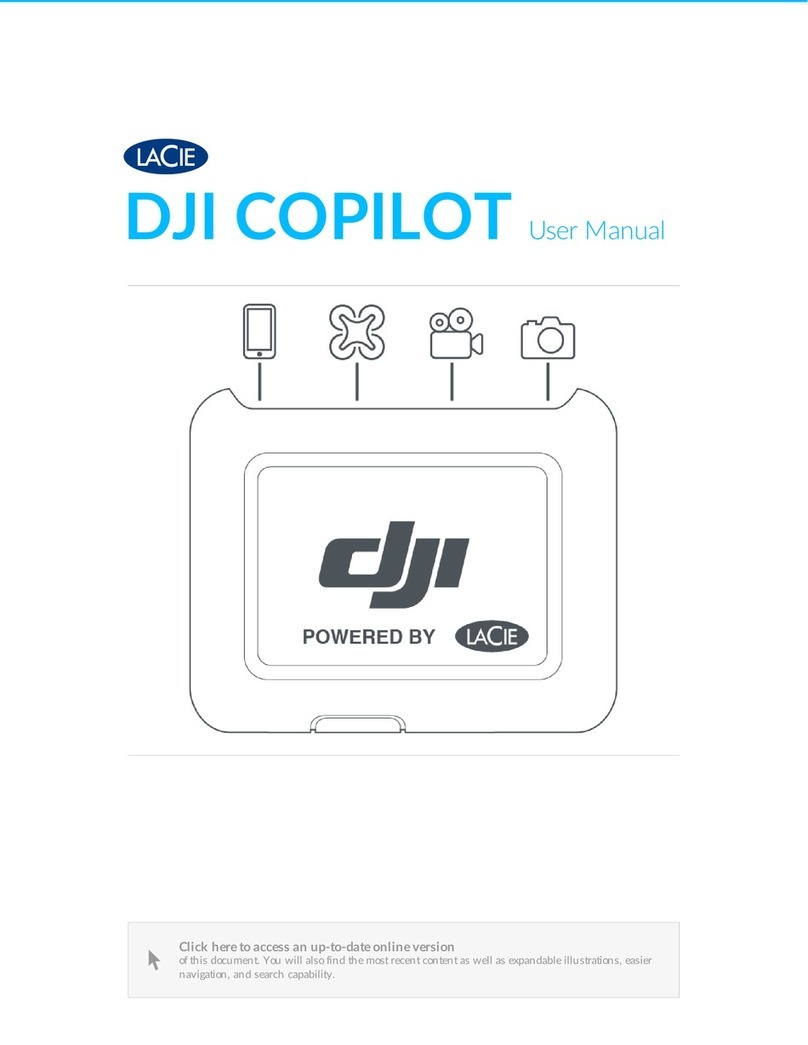
LaCie
LaCie DJI COPILOT user manual

LaCie
LaCie mini FIREWIRE 300996 Specifications
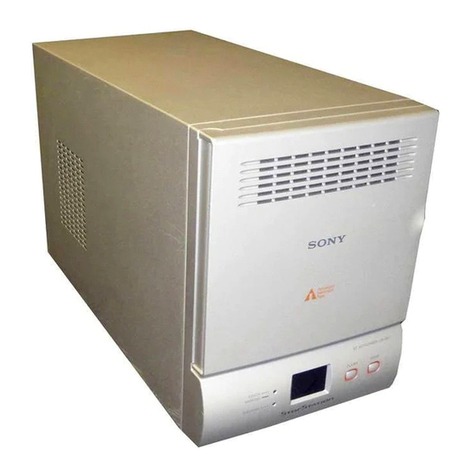
Sony
Sony StorStation LIB-D81 operating instructions
